On the morning of Sunday, October 14, 1962, Juanita Moody exited the headquarters of the National Security Agency, at Fort Meade, Maryland, and walked the short distance to her car, parked in one of the front-row spaces reserved for top leadership. The sky was a crystalline blue, “a most beautiful day,” she recalled later. Moody had just learned that the U.S. Air Force was sending a U-2 spy plane over Cuba to take high-altitude photographs of military installations across the island. Moody was worried for the pilot—twice already in the past two years a U-2 spy plane had been shot out of the sky, once over the Soviet Union and once over China. She was also worried for the country. Tensions between the United States and the Soviet Union were worsening by the day. President John F. Kennedy, American military leaders and the intelligence community believed that the Soviet military was up to something in Cuba. Exactly what, no one could say. “I went out and got into my old convertible at the precise moment I had been told this pilot was going to get into his plane,” Moody said.
What unfolded over the next two weeks was arguably the most dangerous period in the history of civilization. Close to 60 years later, the Cuban Missile Crisis is still considered a nearly catastrophic failure on the part of America’s national security apparatus. How America’s top agents, soldiers, diplomats, intelligence analysts and elected officials failed to anticipate and uncover the buildup of a nuclear arsenal on America’s doorstep, less than 100 miles off the coast, is still being studied and debated. At best, the story of American intelligence activities before and during the crisis is far from complete. One of the most extraordinary omissions to date is the central role played by Moody, a 38-year-old code-breaking whiz and the head of the NSA’s Cuba desk during the perilous fall of 1962. Even today her name is largely unknown outside the agency, and the details of her contributions to the nation’s security remain closely guarded.
Of medium height, with lightly curled brown hair and a round face, Moody was not a spy in the secret agent sense. Her world was signals intelligence, or “sigint”—radio messages, radar data, electronic communications, weapons systems readings, shipping manifests and anything else that could be surreptitiously intercepted from friends and foes alike. Her only brief turn in the spotlight came more than a decade after the Cuban Missile Crisis, when she found herself caught up in the domestic surveillance scandals that engulfed Washington after Watergate. But who was this woman? I’ve spent several years trying to find out, digging through government archives and reviewing formerly classified documents, including internal NSA reports and performance reviews obtained using the Freedom of Information Act, as well as interviewing historians, current and former NSA staff and Moody’s surviving relatives, who provided personal letters and photographs. Now the story of this spy service pioneer and key figure in the nation’s response to Soviet encroachment in the Western Hemisphere can be told for the first time.
* * *
Juanita Moody (Née morris) was born on May 29, 1924, the first of nine children. Her father, Joseph, was a railroad worker turned cotton-and-soybean farmer, and her mother, Mary Elizabeth, a homemaker. The family lived in the hamlet of Morven, North Carolina, in a rented house with no bathroom, no electricity and no running water.
Moody was a leader from an early age. “I felt I had to do what Juanita said,” her sister Virginia “Dare” Marsh, 90, told me on a call last spring. To her siblings, Juanita’s authority was on a par with that of their parents, yet her brothers and sisters didn’t resent her. “She was always sweet lovin’ and fair to me,” Marsh said. There was also a sense that Juanita was special. “I felt at times like my parents looked up to her as well.” The school superintendent in Morven saw a spark in her, too, and recommended her for Western Carolina Teachers College, in Cullowhee.
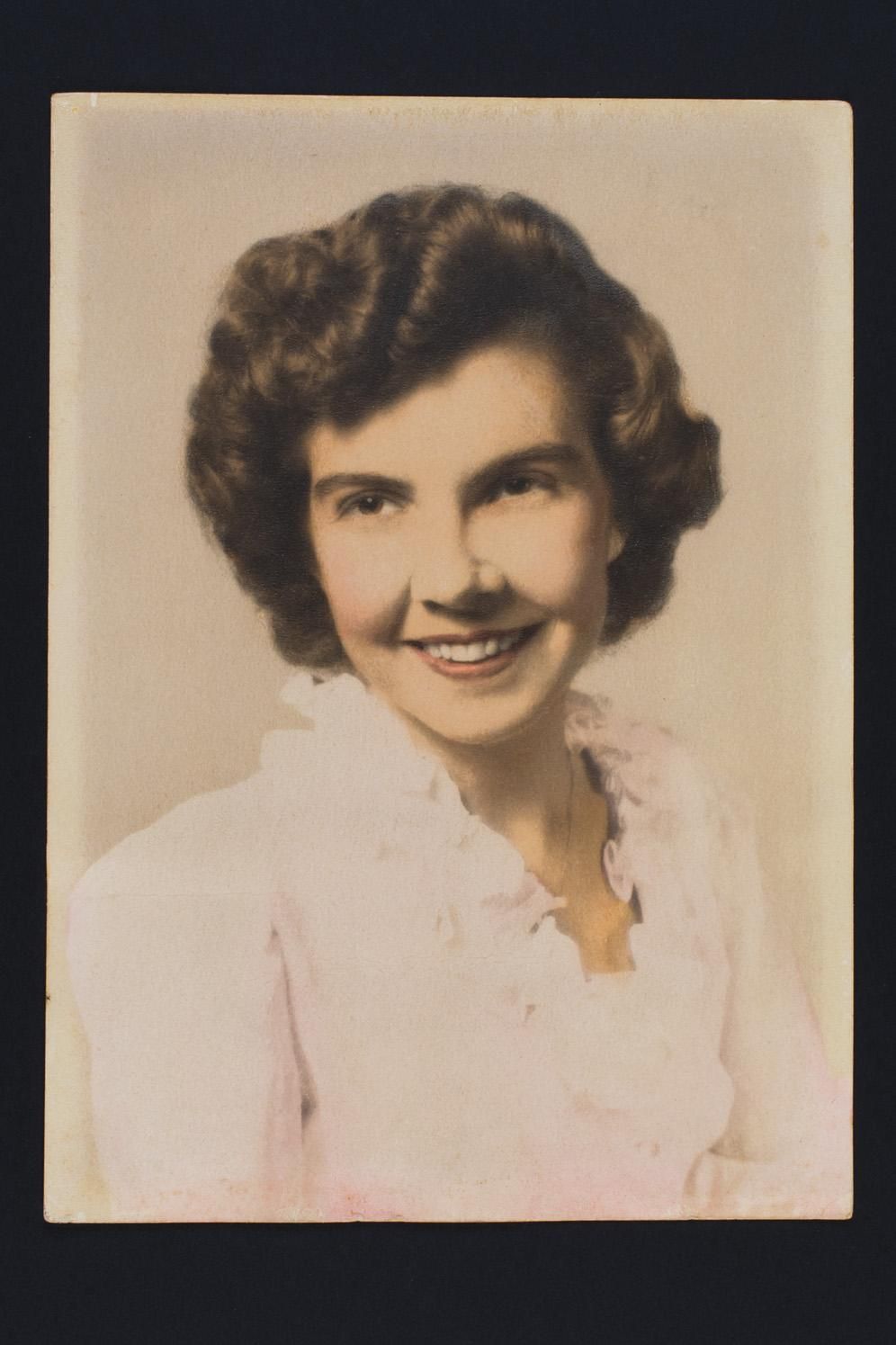
Juanita borrowed money and enrolled, but then came the war. “All of the sudden there were practically no men left on the campus,” Moody recalled later, in one of a series of interviews with NSA historians that were declassified in 2016. “I felt that it was wrong to be spending my time in this beautiful place—clear blue skies, going around campus and studying and going to classes at leisure, when my country was in a war.” At the Army recruiting office in Charlotte, she said she wanted to volunteer. “What do you want to do?” the recruiter asked. “I’d like to get into intelligence work,” she said.
It was spring 1943. Moody took a few tests and was sent to Arlington Hall, in Virginia, headquarters of the Signal Intelligence Service, the precursor to the NSA. She was trained quickly in what was known as “cryptanalysis,” and was soon part of a group that used ciphers to crack encrypted Nazi communications. When she finished work for the day, she and a few other obsessives stayed late into the night, working illicitly on an unsolved “one-time pad,” a code that could only be cracked with a key provided to the message’s recipient ahead of time. She recalled working “every waking moment” and subsisting on buns made by a sympathetic local baker who left them for her to pick up on her way home in the middle of the night.
The painstaking nature of code breaking in those days, when teams of analysts sifted through piles of intercepted texts and tabulated and computed possible interpretations using pencil and paper, made a deep impression on Moody. Eventually, she and a colleague, a linguist and mathematician who had worked at Bletchley Park, Britain’s code-breaking headquarters, persuaded agency engineers to custom-build a machine for the one-time pad problem based on Alan Turing’s work that could generate cipher keys automatically, using the agents’ inputs. “It was a very clumsy thing,” Moody recalled. But it worked, helping the Americans decode secret messages sent to Berlin from the German ambassador in Tokyo. It was the first of many times in her long career that Moody, who would herself become a familiar face at Bletchley Park and at the IBM campus in New York, helped advance intelligence work by pushing for an ambitious and innovative use of new technologies.
After Japan’s surrender, Moody told her superior at the SIS that, with the war done, she planned to return to college. Although he himself had earned a PhD, he told her that she was making a big mistake. “This is your cup of tea, and there are going to be other targets”—other secrets to uncover in defense of the nation. “This effort is not going to stop today. This is just the beginning.”
* * *
Moody stayed with the SIS, as a staff cryptanalyst focused on signals collection in Eastern Europe. In 1947, she was promoted to chief of the Yugoslavia section. Five years later, on October 24, 1952, President Harry Truman signed a secret memorandum, and the National Security Agency was born. Since the NSA’s inception, its role was unambiguous: snoop, scoop, filter, deliver. The agency’s responsibility ended at gathering information. Analysis was the purview of the brains at CIA.
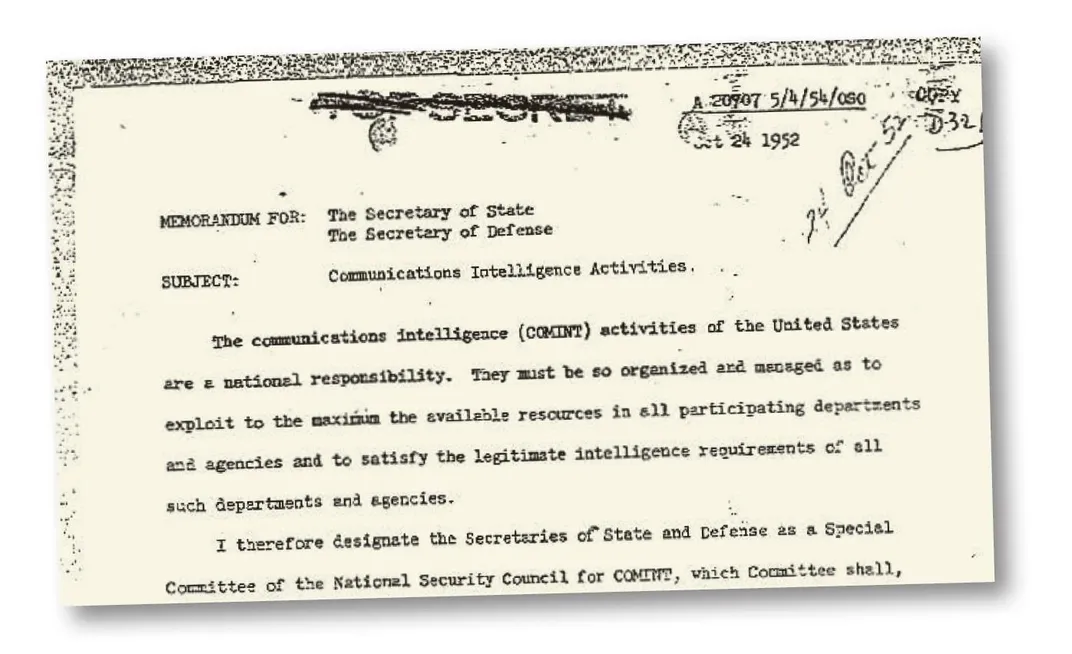
During the 1950s, Moody took on several new leadership roles at the NSA—chief of European satellites, chief of Russian manual systems, chief of Russian and East European high-grade manual systems. She also fretted over technical inefficiencies. At a time when computing technology was advancing quickly, she viewed the NSA’s use of handwritten decryptions, memos and top-secret communications as anachronistic. Where she excelled was not high-level mathematics or engineering but the application of new technologies to distill huge amounts of data and make it available to decision makers as quickly as possible. She was an advocate for using big data long before the concept had taken hold, and she pushed the agency to adopt the latest tools—Teletype, Flexowriter, early IBM computers, an intranet precursor and a searchable database called Solis.
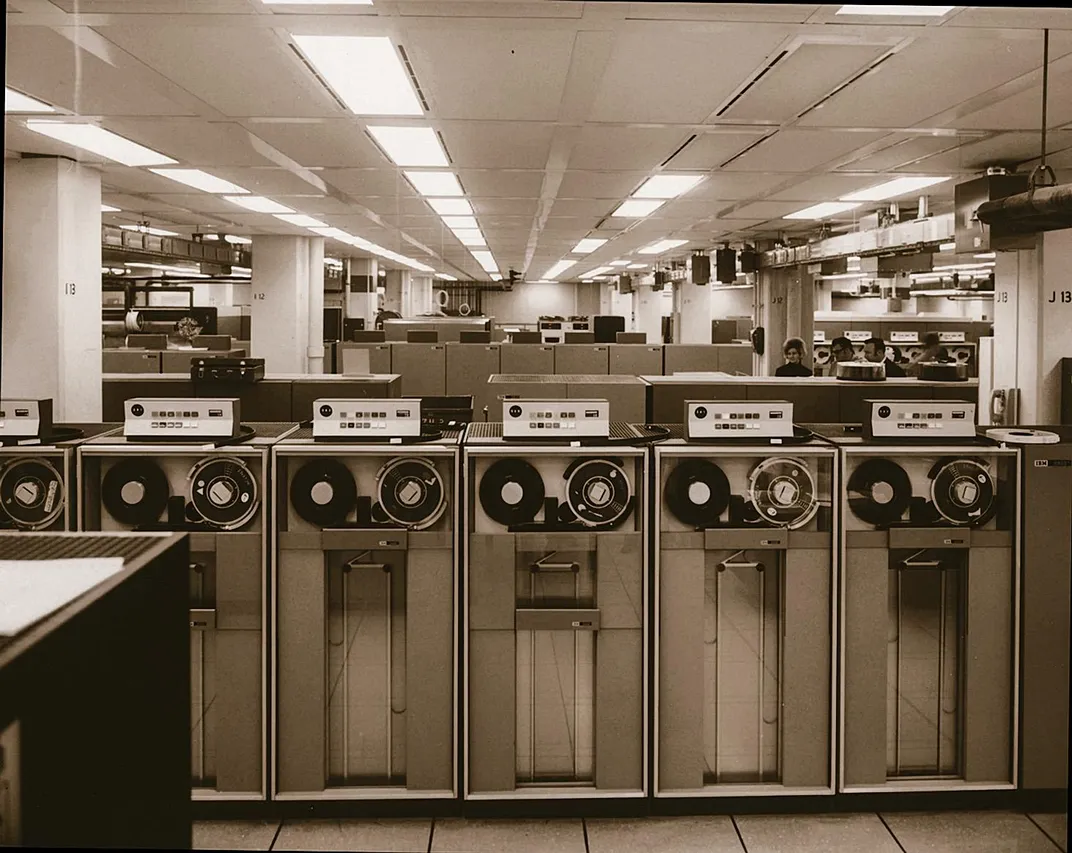
She managed whole teams of people—her “troops,” as she called them. As a leader, she was impolitic by her own measure, occasionally calling meetings to order by whacking a hockey stick on the table. She established a system she called “Show and Tell.” Each morning, while she sipped her coffee, the division heads under her command would come by her office one by one to present highlights from the previous day’s intelligence haul. Moody would then grill them about when the intercepts were made and when the information had been sent to the NSA’s “customers”—the White House, congressional leadership, military brass, the other intelligence agencies. When she judged the lag time to be substantial, she said so. “You people are doing a tremendous job producing beautiful history,” she’d tell them. “You’re not producing intelligence.”
When it came to being a woman in a male-dominated world, Moody had a simple outlook. “I never had much of a problem,” she told an NSA historian in 2001. She credited the men in her family for bringing her up not to question her own worth. “They always made me feel that I could conquer the world if I wanted to,” she said. At the same time, she was convinced that on more than one occasion she had been passed over for a promotion because she was a woman. As the only woman present at NSA stag parties she was treated like a spectacle—one time the men had fed her with a spoon—yet she would only say, “That stood out a little bit.”
She was also aware of harassment. One NSA director (Moody wouldn’t name him) employed several young women in the offices in Fort Meade, whom the director, believing himself to be witty, called NSA’s “paint and body shop.” Moody ran into three of these women one time in the restroom. Through tears, they described what they’d been subjected to, which Moody did not specify, but which appears to have been inappropriate sexual comments or behavior, perhaps even solicitation. Moody chose not to do or say anything. “Until this day,” she told the NSA interviewer, “I wish I had done something, you know—but I didn’t.”
When she wasn’t working, Moody and her husband, Warren, an executive at Eastern Airlines, would escape the Beltway for the Shenandoah Valley, where they had a mountain cabin nicknamed Hoot ’n Holler. Life away from Washington was about cocktails, lawn games, music, tracking turkeys—anything but national security. Officials from Washington, friends from around the globe, military generals, even the occasional MI6 agent were guests. Moody’s favorite pastimes were listening to jazz, working in the garden, fishing, and hunting deer with a Ruger .44-caliber carbine. “She’d be singing Roger Miller songs and had a drink and was all happy,” Moody’s nephew William Peter Jacobsen III told me.
In 1961, having been attached to the so-called “Soviet problem” for several years, Moody moved up again, becoming chief of a section known as G-Group, which was responsible for overseeing NSA’s operations nearly everywhere excluding China and the Soviet Union—some 120 countries. On the way home the night of her promotion, she stopped at a store and bought maps of Africa and South America. She wanted “to learn what all the countries were,” she recalled.
* * *
On April 17, 1961, paramilitary soldiers stormed Cuba’s Playa Girón, launching the brief and doomed attempt to overthrow Fidel Castro that became known as the Bay of Pigs. The surprise attack, carried out by Cuban exiles trained and led by the CIA, was in disarray almost from the start, and the blundering operation set in motion a rapid escalation between the United States and the Soviet Union that led directly to the Cuban Missile Crisis. Before the Bay of Pigs, Castro had been lukewarm about Soviet overtures and support. When the superpower next door tried to oust him, he changed his mind. For those in the American intelligence community, Soviet Premier Nikita Khrushchev’s vow to help the Cubans defend themselves made it imperative to focus more attention on the Caribbean, a new front in the Cold War.
That spring, the NSA reorganized its operations, shifting resources to Cuba, which fell squarely under Moody’s command. “There might have been the equivalent of two people on the problem at that point,” Moody recalled. One of the first things her team detected was Cuba’s improved communication security, which had until then been “relatively unsophisticated,” as Moody put it. Now it was strengthened with the introduction of a microwave system across the whole island. The technology provided a high level of secrecy because land-based microwave antennas relay information in a chain, and the only way to intercept a message was to be close to an antenna. U.S. military and intelligence agencies knew about the towers but couldn’t intercept the signals being transmitted.
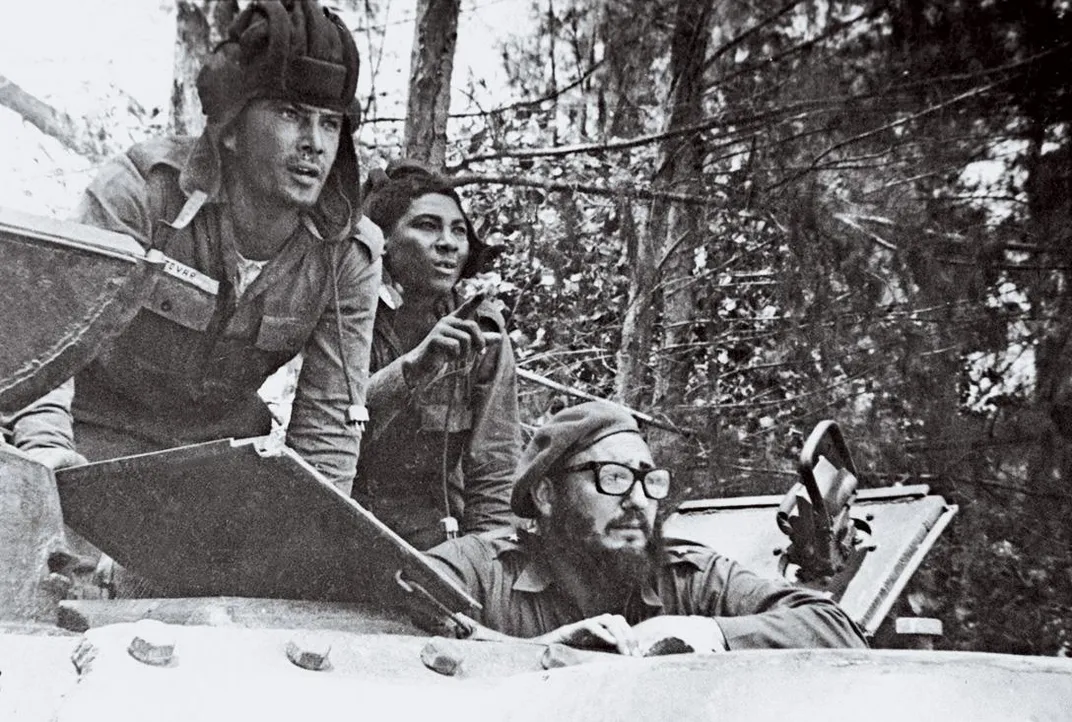
The NSA responded by establishing new intercept facilities in Florida and flying surveillance aircraft around Cuba. But that wasn’t enough, so the Navy deployed the Oxford, the Liberty and the Belmont—World War II-era ships newly outfitted with surveillance equipment—which sailed along the edge of the island’s territorial waters. Over the next few months, Moody’s team discovered that the microwave towers were the least of America’s worries. Sigint revealed increased maritime traffic from Soviet naval bases to Cuba. Cargo manifests intercepted from Soviet ships docking in Cuba were sometimes blank. Other times, declared cargo didn’t match weights reported in port. Through intercepted conversations, the NSA learned of clandestine unloading at night, as well as the delivery of Soviet tanks. Things “were getting hotter and hotter,” Moody recalled.
Around this same time, intercepted communications in Europe contained Spanish-language chatter at air bases in Czechoslovakia: The Soviets were training Cuban pilots. Also, the Americans learned, the USSR was sending MIG jets and IL-28 bombers to Cuba. Moody traveled to London at least once during this period, most likely to coordinate with her counterparts at Britain’s Government Communications Headquarters.
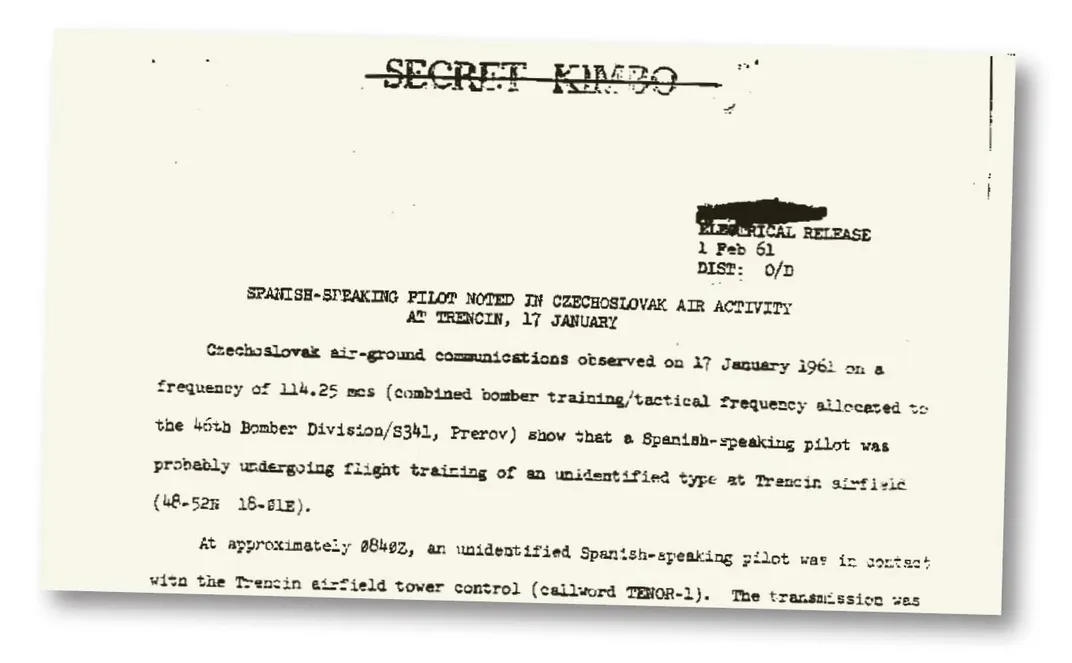
By the fall of 1961, the Soviets had backed out of a bilateral moratorium on nuclear-weapons testing; in late October, they detonated a 50-megaton hydrogen bomb in the Arctic Sea, producing a blast equivalent to 3,800 Hiroshima bombs.
A few weeks later, Louis Tordella, deputy director at the NSA, showed up at Moody’s office with two high-ranking officials from the Kennedy administration, one of whom was Edward Lansdale, an assistant secretary of defense. They stepped into a small conference room, where Tordella closed the door and drew the blinds.
“We want to know what you know about Cuba,” Moody recalled Lansdale telling her. “Even if it’s a hunch, or a thought, or a guess, I want to know everything that’s on your mind when you think Cuba.” Moody started in on a highlight reel of intercepts—the blank cargo manifests, the bogus port declarations, conversations that mentioned tanks, radar and antiaircraft guns, the Soviet money and personnel flowing to the island. At one point, Lansdale interjected, “Now, come on!” as if Moody was exaggerating. She was unfazed. “I don’t have to have any hunches,” she said. It was all in the sigint.
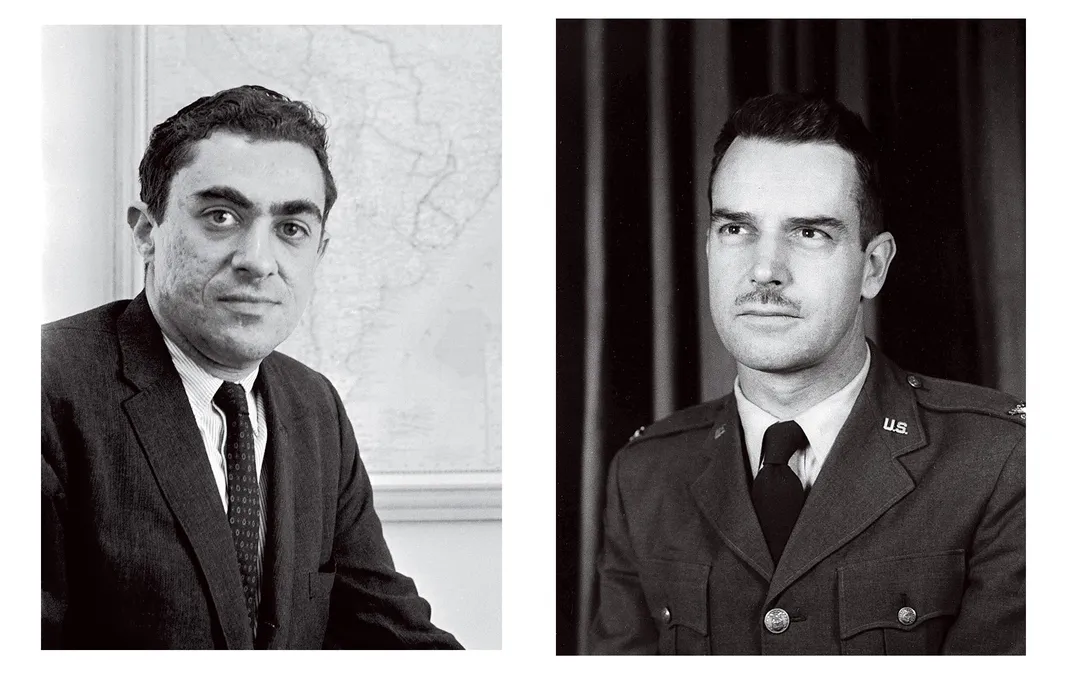
Impressed by her expertise, alarmed by what she had to say, and perhaps concerned that no one was providing the White House with this level of detail about an aggressive military buildup in Cuba, Lansdale asked Moody to write up her findings. Along with a few colleagues, she spent the next three days and nights compiling “wheelbarrow loads of material” into what she called “a special little summary for the assistant secretary of defense.” When she was done, Moody urged Tordella to “publish” her report, meaning circulate it among the intelligence agencies, the White House, the State Department and the military. Cautious not to step outside NSA’s prescribed role, Tordella rebuffed her, but he did send it to Lansdale, who sent it to President Kennedy, who returned it with his initials—signaling he’d read it. “I told my troops, ‘Keep this updated,’” Moody said of her report. “‘If you get anything to add to it, do it immediately and tell me.’”
Over the next few months, Moody repeatedly, and unsuccessfully, pleaded with Tordella to release her updated report. By early 1962, she said she was “really getting scared.” The amount of military equipment piling up in Cuba didn’t square with the Soviets’ repeated assertions that it was all “defensive.” Details about Soviet technicians “moving around in Cuba” were especially worrisome, and by this point the NSA likely knew the Soviets had moved surface-to-air missiles (not to be confused with ballistic nuclear missiles) to Cuba as well.
In February, not long after the NSA learned that a general from the USSR’s Strategic Rocket Forces arrived in Cuba, Moody went to Tordella once more.
“Look, let’s publish this,” she said.
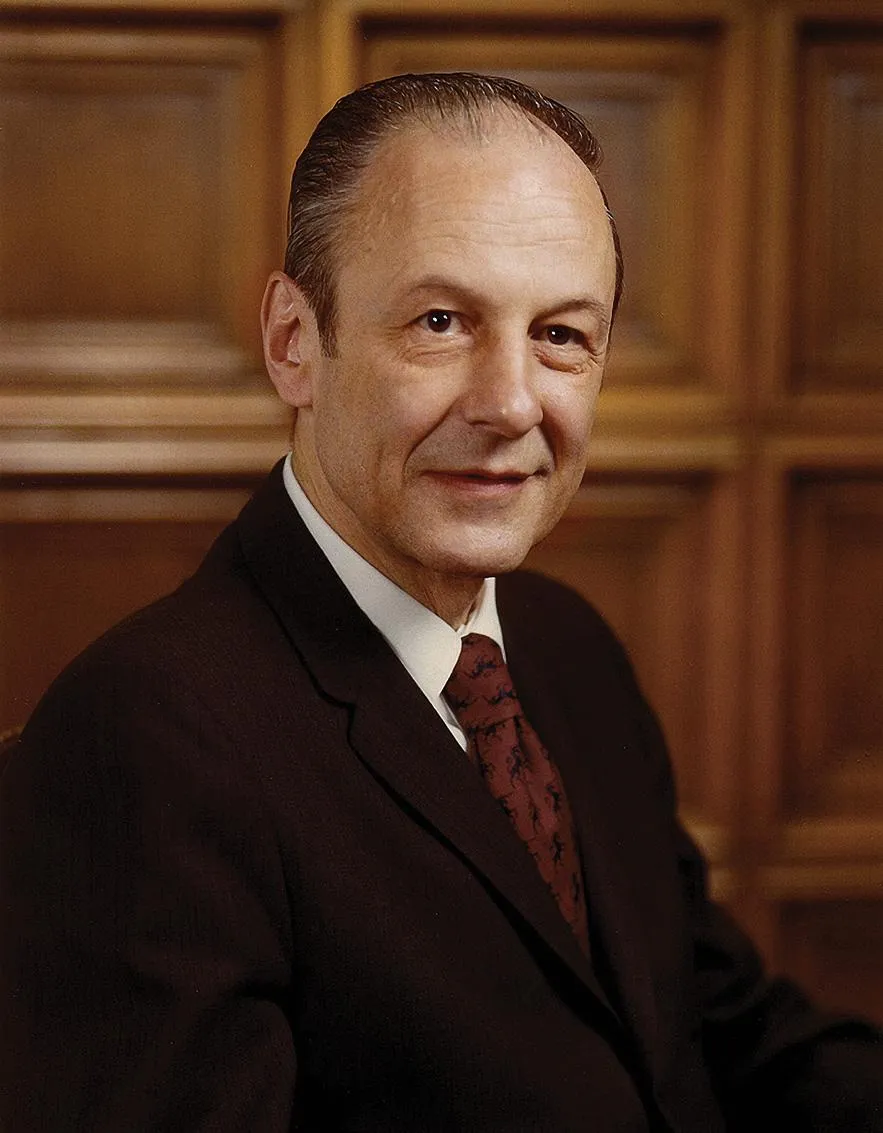
“We can’t do that,” Tordella replied. “It will get us in trouble, because it would be considered outside of our charter.” It was the same rationale he’d been giving since November. Moody persisted.
“It has reached the point,” she told him, “that I am more worried about the trouble we’re going to get in having not published it, because someday we’re going to have to answer for this. And if we do....”
Tordella relented. It was the first such NSA report distributed to the wider intelligence community, and it quickly made the rounds. Before long, an old CIA friend of Moody’s showed up at her office. He wanted to congratulate her, he said. “Everybody knows that you were responsible for getting that serialized report on what’s happening in Cuba out, and I want you to know that was a good thing you did,” she recalled him saying. But he also warned her that not everyone was thrilled about her initiative; he had just come from a high-level meeting at the CIA during which officials tried to “decide what to do about NSA for overstepping their bounds.”
Even today, in spite of the fact that so much about the Cuban Missile Crisis has been made public, Moody’s groundbreaking report, dated February 1962, remains classified. Nevertheless, it’s possible to track the crucial impact it had on American decision-making as the Cuba situation pushed closer to disaster. By springtime, it was clear that the Cubans had established an air defense system similar to one in the Soviet Union and manned, at least in part, by native Russian speakers. In a little over a month, the NSA and its partners had tracked 57 shipments of personnel and military equipment from the USSR to Cuba. MIG fighter jets were soon buzzing U.S. naval aircraft venturing near the island.
The CIA, meanwhile, was hearing from spies and double agents about missiles, but what kind of missiles was still unknown. In an August 22 meeting, CIA Director John McCone updated President Kennedy about Soviet ships that had recently delivered thousands of Russian troops plus “substantial quantities of military materiel as well as special electronic equipment, many large cases, which might contain fusillade for fighter airplanes or it might contain missile parts, we do not know.” What he did know came, at least in part, from sigint reports by Moody and her team.
This was two months before the apex of the crisis. If anyone was worrying about the possible presence of nuclear missiles specifically, they didn’t say so. But McCone was closest to guessing the nature of the threat. The CIA director grew convinced that the Soviets had placed surface-to-air missiles on the island to keep prying eyes away. His deputy at the time later recalled McCone telling his team: “They’re preventing intrusion to protect something. Now what the hell is it?”
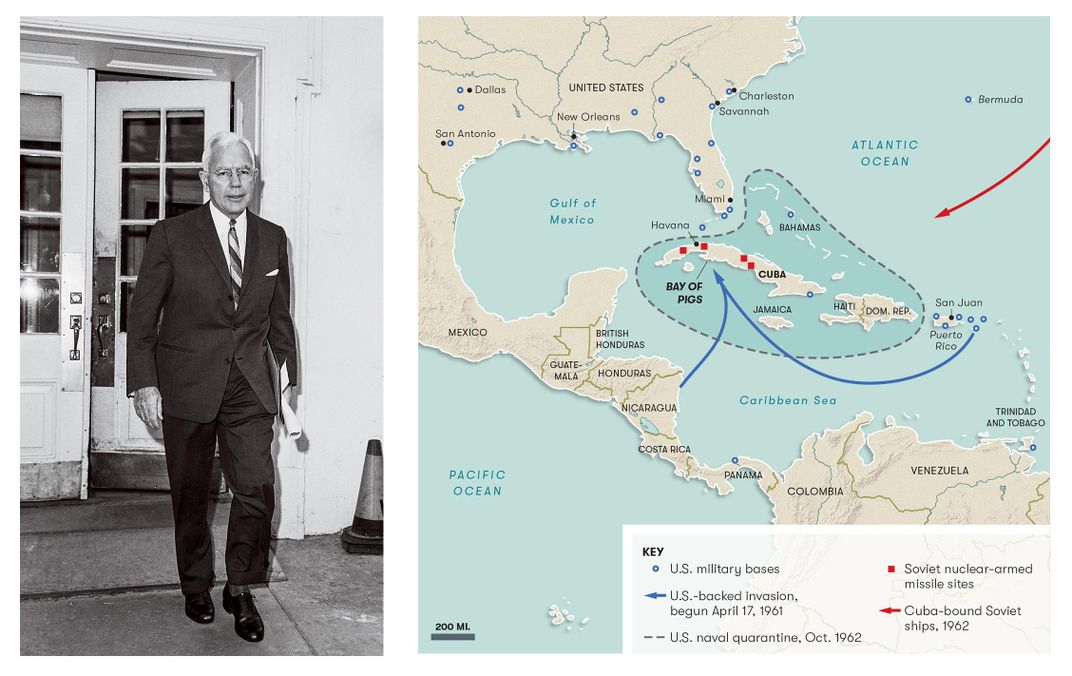
The Americans stopped conducting U-2 reconnaissance flights over Cuba in early September out of concern that the planes might be shot down. Later that month, armed with intelligence from Moody’s G-Group and information from sources on the ground, McCone persuaded the president and the National Security Council to restart U-2 flyover missions to get answers. Poor weather and bureaucratic holdups delayed the first mission. Finally, on Sunday, October 14, after a so-called “photo gap” of more than five weeks, a U-2 spy plane took off from California’s Edwards Air Force Base for the five-hour flight to Cuba. That same morning, Moody sat in her convertible at Fort Meade, staring at the sky.
* * *
Because of the danger, the pilot spent only a few short minutes in Cuban airspace before landing in Florida. The next day, a group of intelligence experts huddled over tables in the Steuart Building in downtown Washington, D.C., the secret headquarters of the CIA’s National Photographic Interpretation Center, to pore over 928 images that the U-2 had taken of several military sites. Examining one set of photographs, an analyst named Vince Direnzo paused when he saw what appeared to be six unusually long objects obscured by a covering, possibly canvas. He determined that these objects were much larger than Soviet surface-to-air missiles the Americans already knew were in Cuba.
Direnzo checked photographs of the same site taken during flyover missions weeks earlier and saw that the objects had been placed there in the intervening time. In the archives he compared the images with photographs of May Day celebrations in Moscow, when the Soviets paraded military equipment through Red Square. He became convinced that the objects spotted in Cuba were SS-4 medium-range ballistic missiles, weapons that could carry nuclear payloads and had a range of more than 1,200 miles—capable of striking a large portion of the continental United States. Further photographic evidence from other sites revealed missiles with a range of 2,400 miles.
Direnzo and his colleagues spent hours checking and rechecking their measurements and looking for ways they might be wrong. When they shared their assessment with the center’s director, he concurred, adding that this was most likely “the biggest story of our time.” The findings were soon verified by a Soviet colonel secretly working for MI6 and the CIA.
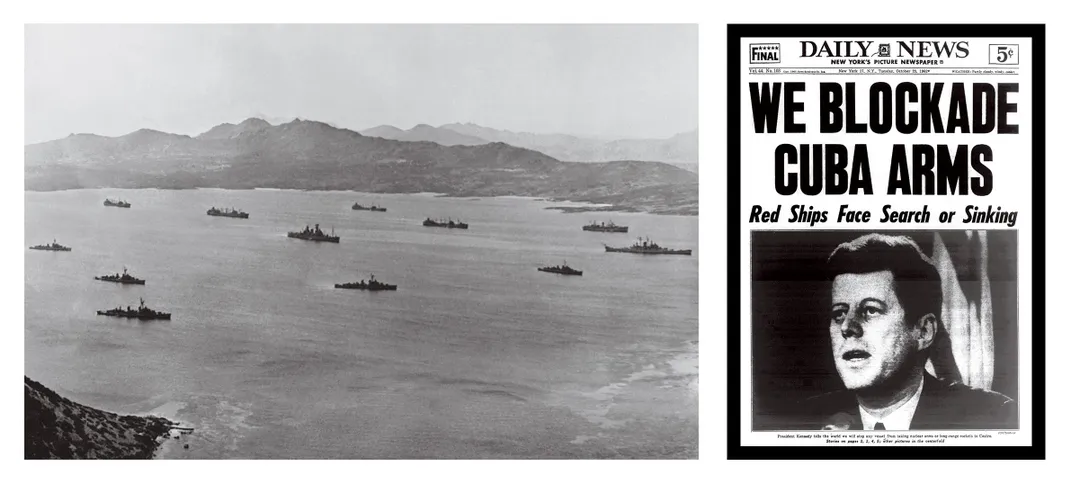
Faced suddenly with an unprecedented threat, Kennedy ordered a maritime “quarantine” of Cuba, to block any further transport of weapons to the island, and declared that noncompliance by the Soviet Union would mean war. The hope was the line-in-the-sea strategy would demonstrate force and readiness to attack while providing both sides with breathing room, so they could begin inching away from the ledge.
With the discovery of nuclear weapons in Cuba, the mission at the NSA shifted abruptly from uncovering secrets to assessing the enemy’s war footing in real time or as close to it as possible. Gordon Blake, the NSA director, established an around-the-clock team to churn out sigint summaries twice a day as well as immediate updates as needed. Moody was put in charge of this effort; she spent many nights sleeping on a cot in her office. She later recalled the solidarity throughout the agency, with staff members from other groups showing up at Moody’s office to volunteer their help. Late one night, Blake himself stopped by and asked how he could lend a hand. Moody gave him a list of names. Blake picked up the phone, and Moody overheard him rousing people from their sleep: “This is Gordon Blake. I’m calling for Juanita Moody. She wonders if you can come in. They need you.”
Listening and watching for new activity on and near the island, sigint collectors relied on land-based electronic surveillance, a “net” of underwater hydrophones, spy planes, listening devices on Navy ships, and other, still-classified tools. The USS Oxford continued its near-shore mission, despite being well within range of a Soviet attack. It wasn’t long before sigint indicated that radar systems at the newly discovered missile sites had been activated.
Of paramount concern was figuring out how Soviet ships would respond to the quarantine. Using intercepted radio and radar information, maritime traffic analyses and location data provided by the Navy, Moody’s team kept close tabs on Soviet ships and nuclear-armed submarines as they made their way from the North Atlantic toward Cuba. One critical intercepted correspondence, from the Soviet naval station at Odessa, informed all Soviet ships that their orders would now come directly from Moscow. But whether this meant Moscow was planning a coordinated challenge to the blockade, or a standdown, no one knew.
Then, on October 24, two days after Kennedy announced the quarantine, there was a glimmer of hope: Sigint confirmed that at least one Soviet ship headed toward Cuba had stopped and changed direction, and appeared to be rerouting back toward the Soviet Union—a sign the Soviets weren’t intending to challenge Kennedy’s quarantine. Yet it was also crucial that American officials feel confident in that assessment. This close to the ledge, there was simply no room for miscalculation.
Nobody understood that better than Moody. Although the intelligence about the ship redirecting its course came in the middle of the night, Moody felt the higher-ups needed to know about it right away. She made an urgent call to Adlai Stevenson, the U.S. ambassador to the United Nations, who was slated to address the Security Council about the crisis the following day. When State Department officials refused to put her through, she dialed the number for his hotel room directly. “I called New York and got him out of bed,” she recalled. “I did what I felt was right, and I really didn’t care about the politics.” (She also noted that later “he sent up congratulations to the agency.”)
The intelligence provided the first positive signs of a peaceful exit from the standoff, but it was hardly over. At one point, Navy destroyers and the aircraft carrier USS Randolph tried to force a nuclear-armed Soviet submarine just outside the quarantine zone to the surface by detonating underwater explosives, nearly provoking all-out war. Then, on October 27, the Soviets shot down a U-2 plane over Cuba, killing Air Force pilot Rudolf Anderson Jr. In Washington, the plan had been to strike back in the event that a U-2 was downed, but Kennedy ultimately decided to refrain. Finally, on the morning of October 28, after the United States secretly offered to remove its nuclear missile bases in Turkey and Italy, Khrushchev agreed to dismantle the missile sites in Cuba.
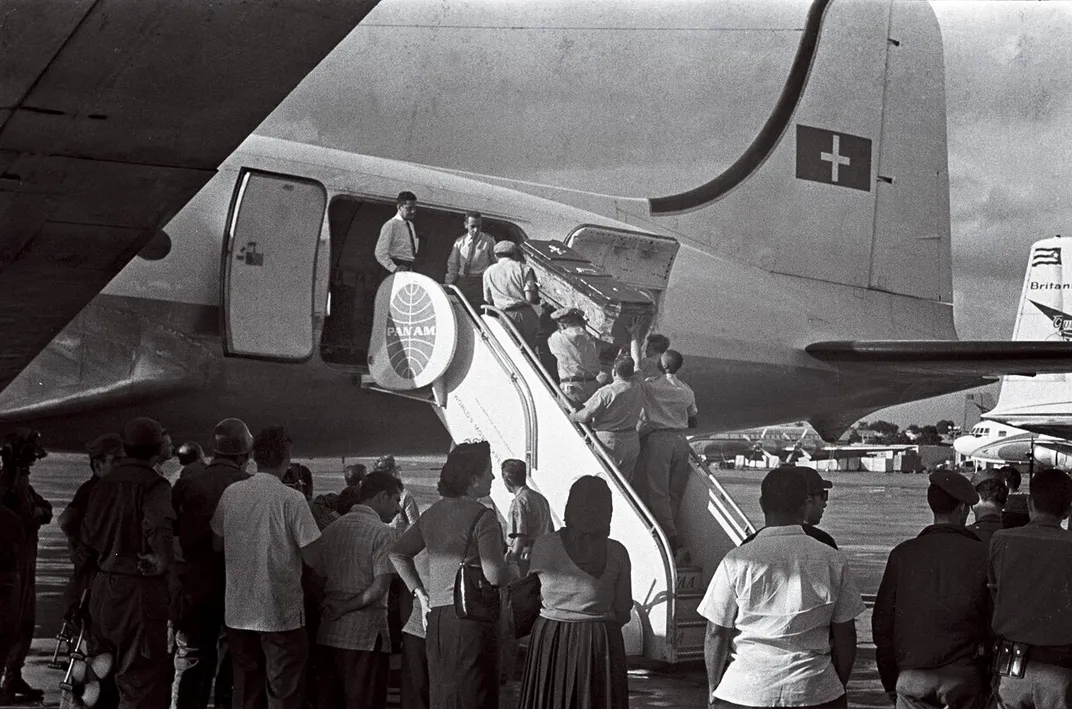
A few weeks later, in a letter of thanks addressed to the NSA director, the commander of the U.S. Atlantic Fleet, Adm. Robert Dennison, wrote that the intelligence coming from NSA’s Cuba desk was “one of the most important single factors in supporting our operations and improving our readiness.”
Moody’s use during the crisis of what were known as “electrograms,” essentially top-secret intelligence reports sent to the highest levels via Teletype, forever reshaped how the agency handled urgent intelligence, according to David Hatch, the senior NSA historian. “Juanita was a pioneer in using this capability,” he told me. Before Moody’s innovation, he went on, “most product was released via slower means, even in a crisis—hand-carried by courier, by interoffice mail, or even snail mail, to cite a few examples. The importance of having the ability to disseminate sigint in near-real-time was clearly demonstrated” during the Cuban Missile Crisis.
“The information Juanita and her team produced was very important in the decision to launch U-2s,” Hatch said. The United States would not have learned what it did, when it did, about offensive nuclear weapons in Cuba without Moody, a civilian woman in a male and military-dominated agency.
Moody would later say the work she did in the 1940s and ’50s had prepared her for the Cuba standoff. “I felt at the time, while it was happening, that somehow I had spent all of my career getting ready for that crisis,” she said of those tense weeks in the autumn of 1962. “Somehow, everything that I had done had helped point me to be in the best position possible, knowledge-wise, to know how to proceed in that crisis.”
* * *
Moody would go on to lead management training courses within the agency, and she helped establish a permanent position for an NSA liaison in the White House Situation Room. The deaths of U-2 pilots had troubled her deeply, and she worked to improve the system for warning pilots when enemy aircraft made threatening course corrections. And she continued to work closely with IBM engineers to improve the NSA’s technical capabilities. Within the agency, she reached legendary status. One of her Fort Meade colleagues told me that a gaggle of young staffers, nearly all of them men, could frequently be seen trailing Moody down the halls, scribbling notes while she spoke.
In 1971, Moody received the Federal Woman’s Award, established to honor “leadership, judgment, integrity, and dedication” among female government employees. During the Cuba “emergency,” Moody’s citation noted, “when the provision of intelligence to the highest authorities was of utmost importance, Ms. Moody displayed extraordinary executive talent.” In his nomination letter, Tordella, the deputy NSA director, whom Moody had clashed with about the Cuba report, called her “brilliant,” and wrote that “no one in a position to know can but affirm that so far as this Agency contributed to the successful U.S. effort in a critical period, Mrs. Moody must be given credit for a significant share in that success.”
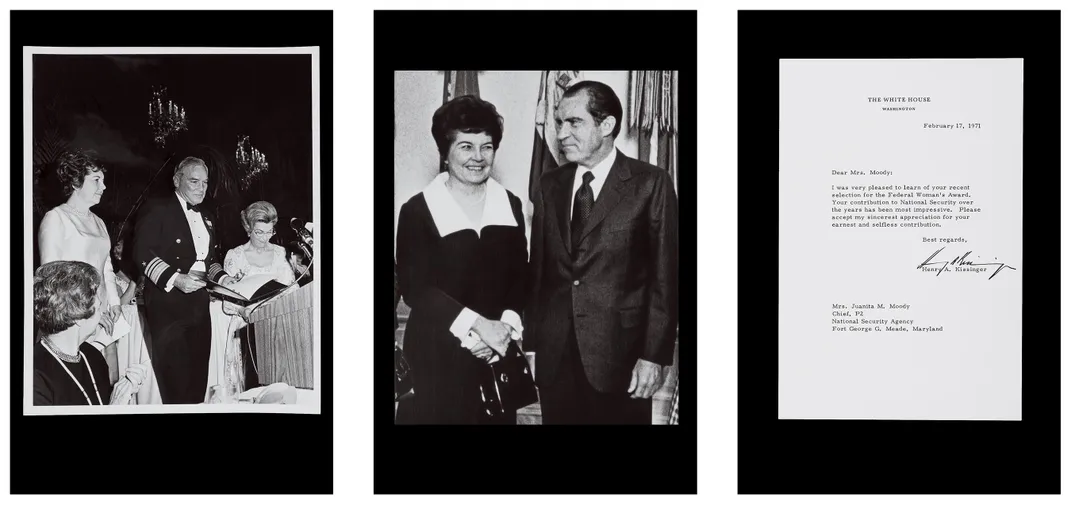
At the banquet dinner, Moody, dressed in a pink gown, sat next to Henry Kissinger, then the U.S. national security adviser. She brought her parents from North Carolina, as well as her sister Dare. Afterward, congratulatory letters and cables came from the White House, the British Embassy, the U.S. Mission in Vietnam, the CIA, the Navy. Yet the broader American public, at that point unaware even of the existence of the National Security Agency, had no idea who she was.
That changed in 1975, when a bipartisan congressional investigation launched in the wake of Watergate found that the NSA had intercepted conversations that included U.S. citizens. More than that, the NSA was supporting federal agencies, namely the CIA, FBI and Secret Service, in their efforts to surveil American citizens put on secret watch lists.
An outcry ensued. The maelstrom would cause lasting damage to the American people’s perception of the trustworthiness of the country’s national security apparatus. Moody, as the liaison between the NSA and other federal agencies—memos to the NSA from FBI Director J. Edgar Hoover were addressed “Attention: Mrs. Juanita M. Moody”—was caught in the middle.
In September 1975, NSA Director Lew Allen Jr. sent Moody to Capitol Hill to testify in hearings about the agency’s surveillance. She had never been trained to testify or speak to a general audience about NSA work, but she accepted the assignment without protest. Frank Church, the Idaho senator who chaired the committee investigating abuses of power by U.S. intelligence agencies, told Moody that she would have to testify in an open and televised session. Moody refused. “I took an oath to protect classified information and never to reveal it to those who are not authorized and have the need to know,” she told him. “I don’t know of any law that would require me to take an oath to break an oath. Is there such a thing, Senator?” There was not, and it was closed sessions for her week on Capitol Hill.
At one point, Senator Walter Mondale, of Minnesota, demanded that Moody bring “everything” NSA had—meaning all the material gathered that might relate to American citizens. Practically speaking, it was an absurd demand; NSA was already collecting enormous amounts of information, much of it superfluous. Very little of it would be of value to the committee’s investigation. Moody tried to explain to Mondale that he misunderstood the nature of the information he was requesting, but he cut her off. “I don’t give a good goddamn about you and your computers, Mrs. Moody,” Mondale barked. “You just bring the material in here tomorrow.”
The next day a truck dumped hundreds of pounds of paper at Mondale’s office. Mondale, having learned in a hurry how ill-informed his request had been, tried to make nice with Moody the next time they met. Putting his hand on her shoulder, he thanked her for being so cooperative. “I wasn’t too pleased or happy about that,” she said later, referring to Mondale’s hand on her shoulder, his change in tone, or both.
During her testimony, Moody explained that lists of names were given to her group at the NSA. When the names appeared in their intercepts, NSA flagged it. She maintained to the last that the NSA had never done anything wrong. “We never targeted Americans,” she told an NSA interviewer in 2003. “We targeted foreign communications.” NSA’s own tribute to Moody in the agency’s “Hall of Honor” says the congressional hearings “incorrectly identified [her] with some possible abuses of government power.”
Still, Moody kept cool throughout the hearings. She even savored the opportunity to teach committee members about the sigint process. She considered it “a great privilege” to help educate the men down on Capitol Hill. “It was the only thing I enjoyed down there,” she said.
Two months later, in February 1976, Juanita Moody retired. If she was ever upset about the way she had been treated during the wiretapping scandal, she kept it to herself. She and Warren made frequent trips to Hoot ’n Holler, their Shenandoah getaway, and to North Carolina, where Moody’s parents and many siblings still lived. “All the years I was working, my sisters and brothers were the ones who took care of my parents,” she told a friend. “Now it’s my turn.”
After Warren became ill, in the 1980s, the Moodys relocated to a seaside town in South Carolina. When not caring for her husband, Juanita planned renovations and real estate ventures and hunted antiques and secondhand jewelry. “She was a delightful lady,” Fred Nasseri, a former Iranian diplomat who moved to the U.S. after the Iranian Revolution, told me recently. Nasseri had opened a Persian rug business in nearby Litchfield, and he and Moody became friends. “We would discuss art, politics, diplomacy.”
But even in retirement Moody, who died in 2015, at age 90, and was buried at Arlington National Cemetery, was discreet. When asked about her past, she would deflect. As one friend remembered her saying, “Oh, I’ve done lots of interesting things for a country girl from North Carolina.”
This story was produced in partnership with Atellan Media.
Editor's Note, March 26, 2021: A previous version of this article misidentified the source of a photograph of Juanita Moody from 1943.
Editor's Note, March 26, 2021: A caption in a previous version of this story identified computers at the National Security Agency as a Univac system in 1963. In fact, the machines were made by IBM and likely date from the 1970s.
/https://tf-cmsv2-smithsonianmag-media.s3.amazonaws.com/filer/76/00/7600356c-febd-45aa-957b-a086933605a6/mobile.jpg)
/https://tf-cmsv2-smithsonianmag-media.s3.amazonaws.com/filer/59/a9/59a913b5-50bc-43cf-a0b4-0567a6f524a0/opener.jpg)